Otto Preminger’s The Man with the Golden Arm stands as a landmark and controversial film in American cinema history: a hard‑edged, uncompromising film noir movie that pushed the boundaries of what Hollywood would allow in the mid‑1950s. Based on Nelson Algren’s novel and released in 1955, the picture stars Frank Sinatra as Frankie Machine, a man trying to stay clean after time in the Lexington narcotic farm and attempting, against a tide of temptation and obligation, to become a working musician again. As a film noir movie rooted in social realism and moral ambiguity, Preminger’s work interrogates addiction, guilt, and the violent currents of urban life while showcasing an actor in one of his most daring performances.
Introduction: Why this film noir movie still matters
There are films that age like preserved artifacts and films that age like living documents; The Man with the Golden Arm is the latter. It resists the polite formulations and tidy moral lessons that often softened Hollywood depictions of vice in earlier decades. Instead, it leans into a raw and morally complex portrait of addiction, ambition, and entrapment. In doing so, it claims a place not only in the genealogy of the film noir movie but also among socially conscious dramas that foreground human frailty without easy redemption.
From a critical point of view, The Man with the Golden Arm functions as a film noir movie in the sense that it depicts urban alienation, fatalism, and the shadowy underside of everyday life. Yet it also complicates the category by refusing to reduce its protagonist to a mere archetype. Frankie Machine is a man of contradictions: a would‑be artist and a habitual gambler, a loving—and culpable—husband, a gentle friend to some and a liability to others. That complexity is precisely why critics and historians still return to the film: it is a study in character more than a straightforward crime thriller, and it advances the film noir movie into social realism.
Context and production: Preminger, Algren, and the making of a film noir movie
Otto Preminger directed The Man with the Golden Arm after acquiring the screen rights to Algren’s novel. The production—credited to Carlyle Productions and distributed by United Artists—was created on a modest budget of around $1 million and released in December 1955. Its screenplay underwent numerous changes, with Walter Newman and Lewis Meltzer credited and Ben Hecht contributing uncredited work. The book’s author, Nelson Algren, famously objected to many changes; Preminger’s adaptation rearranged and reframed elements of the novel, focusing the story’s energy on the filmic possibilities of the streets, the poker games, the auditions, and the long, aching process of withdrawal and relapse.
That tension between novel and screen fueled controversy. The film noir movie that emerged bears Preminger’s stamp: unvarnished, confrontational, and unwilling to flinch from ugliness. Preminger’s filmmaking choices—casting decisions, an emphasis on documentary‑like details, and an insistence on showing the psychological ramifications of addiction—helped produce a film that feels less like melodrama and more like a social document. This is part of what made the film such an intense talking point in 1955: it refused sanitization.
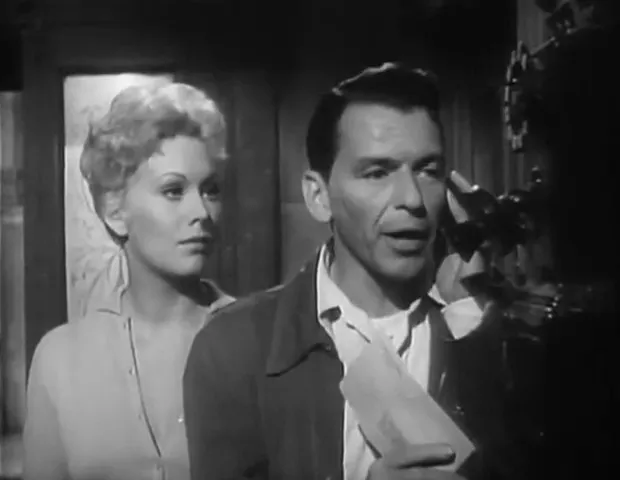
Casting and crew: Sinatra, Novak, Parker, Bernstein
Frank Sinatra’s Frankie Machine is the heart of the film noir movie and a central reason the picture remains compelling. At nearly 40 years old when the film was produced, Sinatra brought a lived‑in weariness to the role that fused street smarts with vulnerability. Eleanor Parker as Sophia “Zosh” Machine and Kim Novak as Molly Novotny create two women on opposite emotional poles—Zosh the manipulative anchor who feigns paralysis, and Molly the sympathetic, boisterous presence who encourages Frankie’s musical ambitions.
Music was essential to the film noir movie’s texture. Elmer Bernstein composed the score; his music underpins both the aspirations of Frankie’s hankering for the drums and the mounting suspense of his relapse. The film also features cameos and performances by notable musicians—Shelly Manne, Shorty Rogers—whose presence authenticates the audition scenes and reinforces the film’s musical stakes.
Plot and narrative rhythm: a condensed walkthrough of the film noir movie
At its core, The Man with the Golden Arm follows Frankie Machine’s attempt to escape a revolving door of dependency and the criminal circuits of his Chicago neighborhood. The film opens with his release from Lexington, a federal narcotic farm, and the early minutes trace his reentry into a world of old allegiances and fresh temptations. The initial bar scenes reveal a neighborhood full of characters—Sparrow, Schwiefka, Louie, Molly, Zosh—each one an index of Frankie’s choices. The screenplay methodically stages rooms and streets where addiction ebbs and surges, and where loyalties can be bartered or betrayed.
Key beats: Frankie arrives home (02:02), is welcomed by friends and acquaintances (04:00–04:30), and is introduced to the promise of a band audition through a letter from Dr. Martin Lennox (15:23). He imagines a future as “Jack Duval,” a swing‑era stage name that symbolizes both reinvention and the cinematic fantasy of escape. The audition (1:26:18) offers an opening, but the realities of his past—dealing cards, owing money, the predatory world of marathon poker games—pull him back. The poker sequences are critical as staging for the film noir movie’s moral arithmetic: the backroom games are where the protagonist’s self‑control is tested, and where the physical and social costs of addiction manifest.
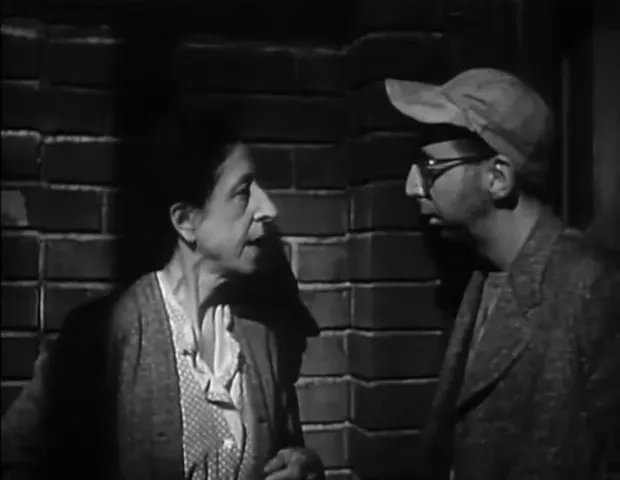
When Louie is discovered dead after a confrontation on a stairwell, the film noir movie shifts into a new register—murder, suspicion, and a man hunted. Zosh’s secret—that she has been walking and faking paralysis to bind Frankie to her—reconfigures the stakes. Instead of the book’s bleak suicide, the film gives us a climactic unmasking and tragedy, as Zosh’s deception is revealed and she falls to her death. Frankie, accused by association and beset by withdrawal, must endure one last, harrowing passage: Molly locks him in her apartment and forces him to “cold turkey” withdrawal (1:36:07–1:39:14). The final images—Zosh’s fall, the ambulance, Frankie walking away with Molly following—are film noir movie images of loss, survival, and the ambiguous cost of a second chance.
Key scenes and their dramatic function
- Arrival and neighborhood reception (02:02–04:30): Reintroduces Frankie and gives the audience a sense of the densely populated social field in which he must reestablish himself.
- Letter from Dr. Lennox and the audition setup (15:23–32:00): Presents the legitimate exit strategy and clamps a deadline onto Frankie’s choices.
- Stolen suit and the police station (1:11:31–1:14:39): The suit subplot demonstrates how easily fortune can be lost and how fragile Frankie’s prospects are.
- Poker marathon and relapse (1:20:42–1:24:54): The all‑night dealing sequence is a crucible in which Frankie succumbs back to the life he hoped to leave behind.
- Cold turkey withdrawal at Molly’s (1:36:07–1:39:14): A raw, physically staging of addiction’s brutality that becomes the film noir movie’s moral and emotional centerpiece.
- Zosh’s revelation and fall (1:53:45–1:55:10): The tragic unmasking transforms the domestic into the catastrophic, sealing a certain fatalism in the film noir movie’s conclusion.
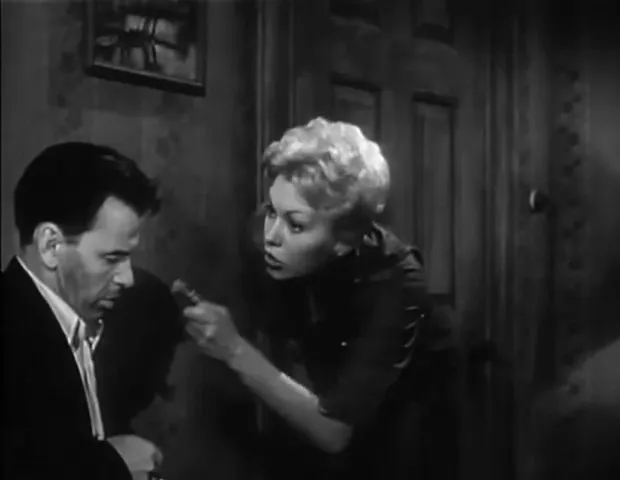
Character studies: performing the film noir movie
Characters in The Man with the Golden Arm are not merely types; they are pressure points. Each relationship tightens or loosens the protagonist’s capacity for self‑control. Frank Sinatra’s Frankie is a study in restlessness. He wants to be a drummer, to pierce the city’s noise with something he can control. The drums symbolize rhythm and craft—the hope that physical discipline can overwrite a psychic compulsion. Sinatra plays Frankie as a man who can imagine a new life but cannot outrun his debts and his past.
Frankie Machine
Sinatra’s performance is the linchpin of the film noir movie’s credibility. He is alternately charming, brittle, and haunted. The role earned him an Academy Award nomination for Best Actor, and it is easy to see why. Frankie is not a noble addict; he is a contradictory figure whose decisions alternate between tender and self‑destructive. He is swayed by friends and predators, by the ache in his limbs and by the allure of a drum kit. Sinatra portrays Frankie with an economy of gesture that reveals an interior stuck between longing and relapse.
Sophia “Zosh” Machine
Eleanor Parker’s Zosh is written as a manipulative, wounded woman who uses a feigned disability to keep Frankie tethered. The film noir movie here demonstrates its willingness to delve into moral ambivalence: Zosh’s actions are monstrous and pitiable. Her secret—walking in private to make Frankie guilty—adds a dark, almost gothic turn to the story. Parker’s performance gives Zosh a brittle legitimacy; a woman who has been permanently damaged physically and emotionally, who uses deception as a survival mechanism.
Molly Novotny
Kim Novak’s Molly is the film noir movie’s bright, if battered, counterpoint. She works in a strip joint, she is candid and sensual, and she embodies the possibility of compassion. Molly does not moralize; she refuses to indulge Frankie’s excuses, and when push comes to shove, she takes the difficult step of locking him in to endure withdrawal. Novak provides warmth and stubborn firmness—qualities that make her one of the film’s moral centers.
Sparrow, Louie, and Schwiefka
Arnold Stang’s Sparrow is a kind of younger brother figure, comic and pathetic, whose attachment to Frankie is sentimental. Darren McGavin’s Nifty Louie represents the petty criminal world that both supports and exploits Frankie. Robert Strauss’s Schwiefka emerges as predatory and practical; the backroom poker games he runs are a kind of economic trap for men like Frankie. These characters together populate the film noir movie’s ecosystem: a community that is simultaneously familial and corrosive.
Visual style and sound design: how the film noir movie feels
Sam Leavitt’s cinematography lends the film noir movie a documentary-like grit. Black‑and‑white photography, often starkly lit, emphasizes both the grit of the tenements and the performative world of the nightclub. The interiors are claustrophobic; the back alleys and gambling rooms compress the characters’ options. The editing by Louis R. Loeffler shapes the film’s rhythmic tension—there are long, patient scenes of conversation intercut with frenetic sequences of dealing and withdrawal.
Elmer Bernstein’s score is another cornerstone of the film noir movie’s identity. Music operates thematically: it is both the symbol of Frankie’s aspiration and the literal background against which his life tilts. Jazz rhythms and percussive motifs dramatize the beats of Frankie’s heart and the beat he hopes to master. Preminger’s decision to make the protagonist a drummer was, from a filmmaking perspective, brilliant: the physicality of drumming provides a visible, audible counterweight to addiction’s erosion of agency.
Design and mise‑en‑scène
The film’s sets—by Joseph C. Wright and Darrell Silvera—render the urban landscape as a character in itself. The poker rooms, the parlors, the cramped apartments: they are not merely backgrounds but active constraints. When Frankie’s suit is stolen, the loss feels like a social stripping; when he is accused of complicity in Louie’s death, the public spaces close in on private failure. The film noir movie uses architecture as fate—railings, balconies, stairwells where tragedy can be sudden and indifferent.
The film noir movie and the theme of addiction
The Man with the Golden Arm approaches addiction neither as melodrama nor as moralizing sermon. Instead it presents addiction as a condition embedded in social relationships and cultural pressures. The film noir movie’s central thesis is that addiction is not merely an individual failing but a condition shaped by economics, trauma, and belonging. Frank’s own explanations are ambivalent: at one point he says he started for “kicks,” while the novel framed his addiction as a war wound morphine dependency. Preminger’s film is more concerned with the present circuitry of dependence—who supplies, who enables, what social demands drive relapse.
The legendary “cold turkey” sequence at Molly’s apartment is one of the most visceral depictions of withdrawal in mid‑century cinema. The camera does not sensationalize the pain so much as hold it steady, making the audience witness to frank suffering. The film noir movie’s refusal to glamorize the fix, the dealer, or the cheat gives its treatment of addiction an ethical clarity: it wants the audience to understand the catastrophe as intimately as Frankie does.
Language and euphemism
Interestingly, the film never names the precise drug, a choice that generated commentary and contributed to the film’s controversial status. Contemporary and modern sources tend to assume heroin is implied; Nelson Algren’s original novel points to morphine under different circumstances. The film noir movie’s discretion did not blunt its impact. On the contrary: the omission made the condition more universal, more about the human behavior of seeking a deadener rather than the pharmacopeia itself.
Comparing film to novel: adaptations, omissions, and changes
Preminger’s adaptation diverges from Algren’s novel in significant ways. The screenplay reshuffles plot points, alters characters, and changes the novel’s moral resolution. While the novel ends on Frankie’s suicide—an abyssal, absolute ending—the film chooses a different kind of ambiguity: Zosh dies, Frankie survives, and the final image is of Frankie walking away, not quite redeemed but not utterly destroyed. These differences matter, because they change the film noir movie’s ethical note: the cinematic version allows for survival; the novel insists on self‑annihilation.
Other changes: the film amplifies the musical aspiration into a dramatic engine—Frankie’s rhythm and his drums become cinematic metaphors for discipline and desire. The character of Vi was altered and aged in the film, the relationships were recombined, and Louie’s death narrative was shifted so that The Man with the Golden Arm achieves a different moral punctuation. These choices drew Algren’s ire, and the historian’s quarrel with the adaptation became part of the film’s reception story. Yet those changes also allowed Preminger to craft a film noir movie with a distinct cinematic logic.
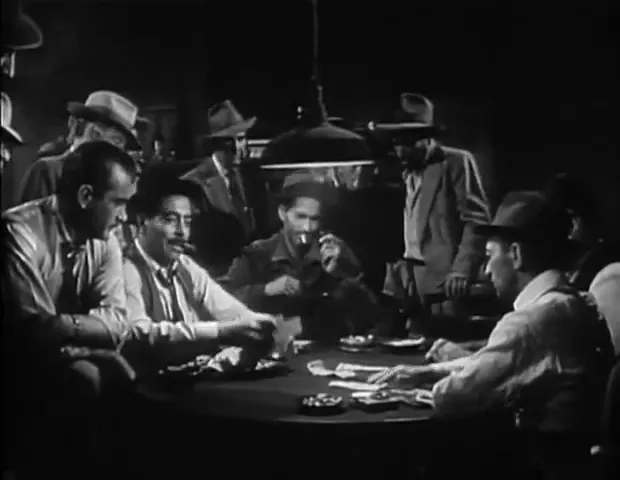
Reception, awards, and legacy: the film noir movie in history
When it premiered, The Man with the Golden Arm provoked conversation and controversy. It was nominated for three Academy Awards: Frank Sinatra for Best Actor, art direction, and Elmer Bernstein’s music score. Sinatra’s nomination—and the audacity of his choice of role—was emblematic of the film noir movie’s seriousness. The film grossed approximately $4.3 million in the U.S., a strong showing for an independent drama of its kind.
Critical responses were mixed but intense. Some praised the film for its courage in tackling taboo subject matter and for its performances; others criticized the departures from Algren’s novel. Over time, however, the film has been reassessed and fortified its status as a significant mid‑century film noir movie. In 2020 it was added to the National Film Registry, an institutional recognition of its cultural, historical, and aesthetic value. The fact that the film ultimately entered the public domain has helped keep it in circulation for contemporary viewers and scholars.
Influence on actors and cinema
Sinatra’s performance is often cited as one of his finest dramatic turns. He demonstrated that he could carry a serious, psychologically complex role and that popular musical stars could make credible transitions into adult dramatic cinema. The film noir movie’s frankness about addiction paved the way for later realistic depictions of vice in American films of the 1960s and beyond. The Man with the Golden Arm thus occupies a spot where star power, social realism, and genre hybridity intersect.
Why critics still study this film noir movie
Critics approach The Man with the Golden Arm for many reasons: its unblinking depiction of withdrawal; its complex, morally ambiguous characters; its interplay of music and social dynamics; and its hybridization of noir elements with social problem drama. It is also a revealing case study in adaptation: how a director and screenwriters can reshape a literary text into a cinematic form that privileges image, sound, and rhythm.
For students of the film noir movie, Preminger’s picture offers a model of how noir traits can be married to topical issues. It demonstrates that noir is less a set of surface tropes (shadowy alleys, femme fatales) than an attitude toward the modern city: a skepticism about heroic agency and a belief in the inescapability of some social conditions. The Man with the Golden Arm adapts noir sensibility to a new thematic center—addiction—without losing noir’s fatalist core.
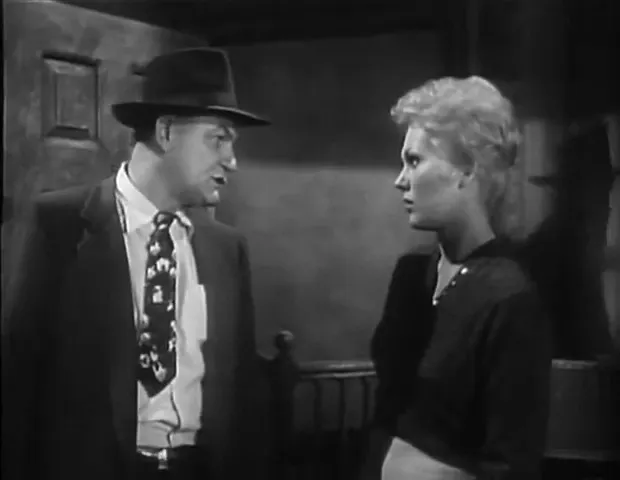
Close readings: selected passages and cinematic craft in the film noir movie
Two sequences merit close attention for how they embody the film noir movie’s craft: the audition and the withdrawal. The audition is staged as both hope and test. The camera lingers on Frankie’s hands and wrists, the places that must deliver precision to secure his future. Sinatra’s body language—tightened, hopeful, then faltering—mirrors the film’s rhythmic editing. The music underscores his intention while the camera insists on the fragility of the moment.
In contrast, the withdrawal sequence is a study in narrative patience. Preminger and the editor refuse to shorten the experience; they allow the audience to witness the concatenation of pain, ritual, and social constraint. To see a man “lock down” his body in front of a loved one is to confront a moral drama whose stakes exceed any single act: it tests faith, endurance, and the social courage to endure suffering without anesthetic. As such, the film noir movie proves that cinematic form—tempo, shot selection, silence—can approximate internal states with an ethical directness.
Differences from the novel: fidelity and divergence in the film noir movie
The film’s departures from Algren’s source are crucial in understanding its specific contribution to the film noir movie canon. Algren’s original novel was an unvarnished literary work that contained other preoccupations; Preminger’s film compresses, excises, and rebalances those concerns to suit cinematic needs. In the novel Frankie’s addiction began as a consequence of wartime medical treatment; in the film, the cause is opaque and the focus is on present consequences. Algren was bitter about these choices, and the subsequent legal wrangling between the author and filmmakers is part of the film’s history. Yet adaptation necessarily involves transformation, and the result is a film noir movie that bears Preminger’s signature: direct, confronting, and visually austere.
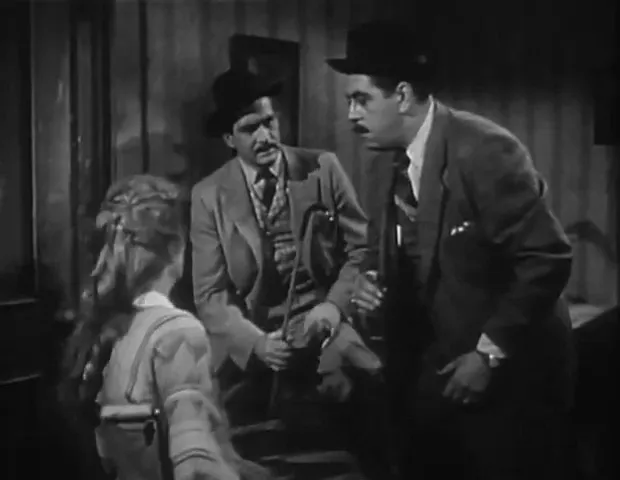
Conclusion: The Man with the Golden Arm as a film noir movie that endures
To call The Man with the Golden Arm merely an historical curiosity would be to miss what keeps it breathing in contemporary critical life. It is a film noir movie that marries psychological nuance to social immediate concerns, that stages addiction with both compassion and clarity, and that offers some of Frank Sinatra’s most memorable screen work. Its formal choices—black‑and‑white cinematography, jazz‑inflected score, patient editing—converge to produce a film that feels both artful and raw.
As a piece of mid‑century American cinema, the film noir movie stands at an intersection: at once a product of the studio era’s lingering constraints and an anticipatory text that prefigures the grittier, more socially candid films of the 1960s. Its controversies—Algren’s displeasure, censorship debates, the film’s treatment of taboo subject matter—only deepen its significance. For critics, scholars, and cinephiles, it remains a vital case study in how mainstream cinema can take risks and still create striking, durable art.
Preminger’s film deserves repeated attention not simply because of the scandal it created on release, or the accolades it received, but because it remains an emotionally truthful and formally assured film noir movie. Its beats—audition, poker, relapse, withdrawal, revelation—compose a tragedy of small, human proportions. The film asks whether escape is possible and, in its ending, refuses to peddle certainties. Frankie walks away. The city keeps turning. The drums keep playing, somewhere in the night.
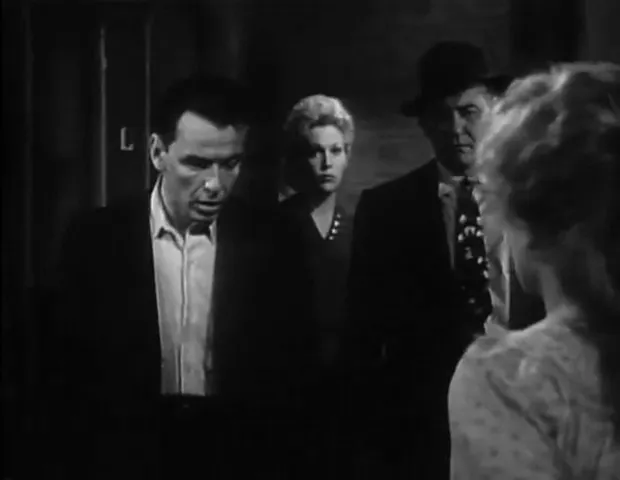
Recommended viewing and further reading
For readers and viewers who arrive at The Man with the Golden Arm via a curiosity about film history or performance studies, the film noir movie rewards close attention to acting, sound, and the ethical portrayal of addiction. Consider watching the film with a focus on the audition and withdrawal sequences to see how music and physicality drive dramatic outcomes. Read Nelson Algren’s novel to compare the book’s bleak choices with the film’s altered ending, and consult contemporary reviews from the 1950s to trace how cultural reception has shifted.
Finally, this film noir movie remains an essential entry in any study of the era’s engagement with taboo topics. It reminds the modern viewer that serious cinema can serve as social testimony: a way to make the unseen felt and the misread legible. Observing the proverbial “golden arm,” one sees both the hand that drums and the hand that reaches for escape—an image that anchors the film noir movie’s uneasy compassion.
Cast and credits (selected)
- Frank Sinatra as Frankie "Dealer" Machine
- Eleanor Parker as Sophia "Zosh" Machine
- Kim Novak as Molly Novotny
- Arnold Stang as Sparrow
- Darren McGavin as "Nifty Louie" Fomorowski
- Robert Strauss as Zero Schwiefka
- Director: Otto Preminger
- Music: Elmer Bernstein
- Cinematography: Sam Leavitt
- Screenplay: Walter Newman, Lewis Meltzer (Ben Hecht uncredited)
Final reflection from a classic cinema critic
Seen as a film noir movie, The Man with the Golden Arm is exemplary: it is stylistically assured, emotionally brutal, and morally complicated. It is a film that refuses to offer neat resolutions and instead insists on the weight of survival. For a classic cinema critic, the film is a text to be read both for its surface pleasures—Sinatra’s presence, Bernstein’s score, the tight ensemble performances—and for its deeper articulations of societal pressures. It remains one of those rare films that both documents and interrogates a social problem while operating as a compelling piece of cinematic art.
For the modern viewer seeking a film noir movie that interrogates addiction with honesty and cinematic rigor, Preminger’s The Man with the Golden Arm remains indispensable.
